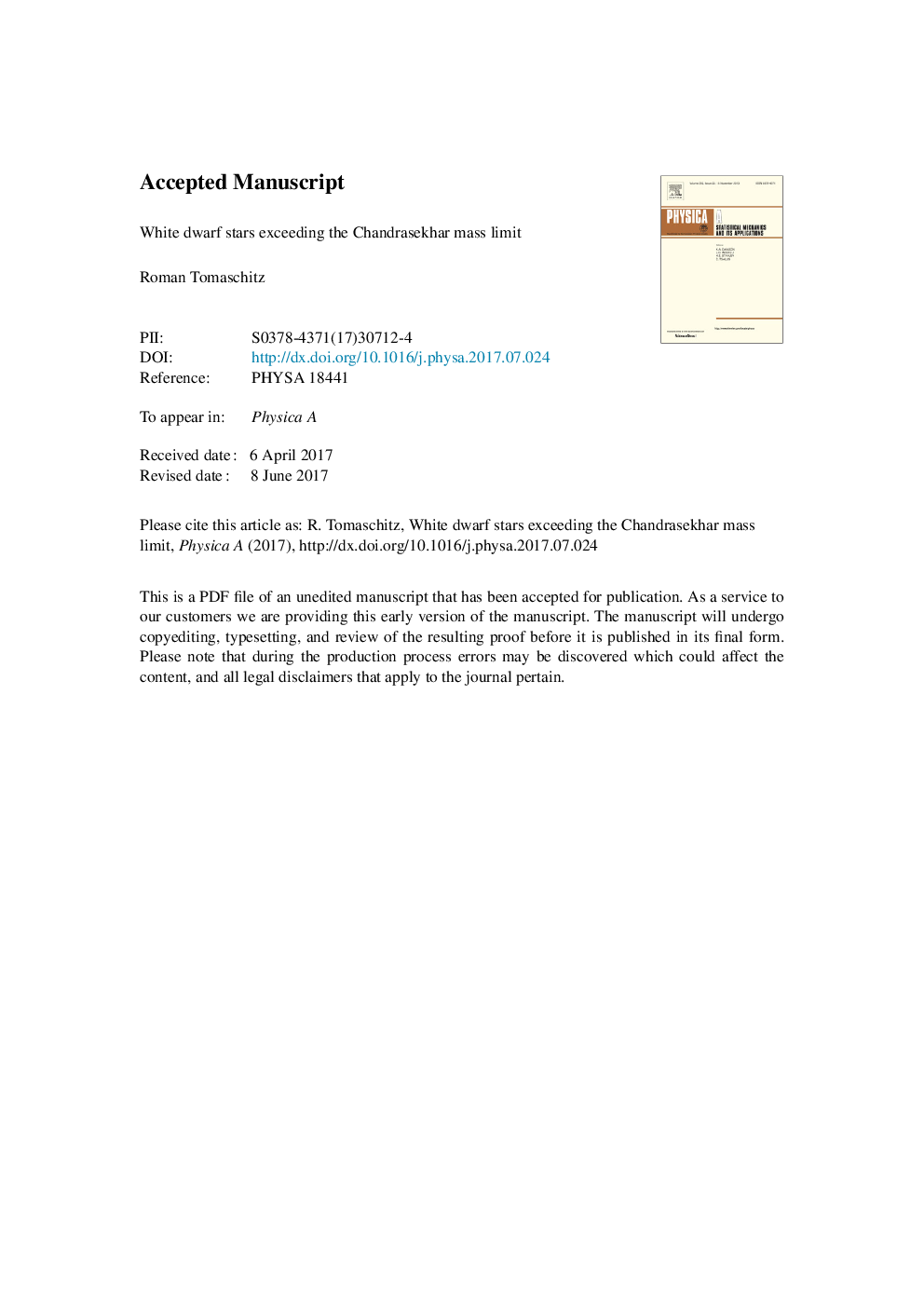| Article ID | Journal | Published Year | Pages | File Type |
|---|---|---|---|---|
| 5102655 | Physica A: Statistical Mechanics and its Applications | 2018 | 26 Pages |
Abstract
The effect of nonlinear ultra-relativistic electron dispersion on the mass-radius relation of high-mass white dwarfs is studied. The dispersion is described by a permeability tensor in the Dirac equation, generated by the ionized high-density stellar matter, which constitutes the neutralizing background of the nearly degenerate electron plasma. The electron dispersion results in a stable mass-radius relation for high-mass white dwarfs, in contrast to a mass limit in the case of vacuum permeabilities. In the ultra-relativistic regime, the dispersion relation is a power law whose amplitude and scaling exponent is inferred from mass and radius estimates of two high-mass white dwarfs, Sirius B and LHS 4033. Evidence for the existence of super-Chandrasekhar mass white dwarfs is provided by several Type Ia supernovae (e.g., SN 2013cv, SN 2003fg, SN 2007if and SN 2009dc), whose mass ejecta exceed the Chandrasekhar limit by up to a factor of two. The dispersive mass-radius relation is used to estimate the radii, central densities, Fermi temperatures, bulk and compression moduli and sound velocities of their white dwarf progenitors.
Related Topics
Physical Sciences and Engineering
Mathematics
Mathematical Physics
Authors
Roman Tomaschitz,
